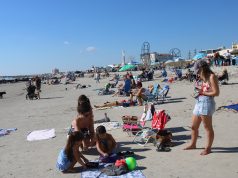Property damage, a persistent concern for homeowners and real estate managers, can result from a variety of causes, including natural disasters, human error, and simple deterioration over time. The repercussions of such damage extend beyond mere financial loss, often disrupting daily life and overall peace of mind. However, with proactive strategies and regular maintenance, the risks associated with property damage can be significantly mitigated. Jason Richard Urbanowski, an expert in construction and property damage consulting through his company, Rapid Construction LLC, offers a comprehensive guide to help property owners effectively mitigate these risks.
Weather-Related Damage
Extreme weather conditions pose a significant threat to properties. Here’s an in-depth look at how to fortify your property with Jason Richard Urbanowski:
• Flood Mitigation: In flood-prone areas, elevate critical utilities like electrical panels, heating systems, and water heaters. Install flood barriers or deploy sandbags when warnings are issued. Ensure that the property’s drainage system is always efficient and functional, with French drains or sump pumps as necessary. Regular cleaning of gutters and downspouts is also vital to prevent water from pooling near the foundation.
• Storm and Wind Damage Prevention: Loose items such as patio furniture, garden tools, and other movable objects should be secured or stored to prevent them from becoming airborne during high winds. Trimming trees and removing dead branches can greatly reduce the risk of them falling on the property. High-quality storm shutters and reinforced garage doors can offer additional protection against strong winds. Regular roof inspections are crucial; replace missing or damaged shingles promptly to avoid leaks.
• Winter Weather Preparedness: Insulate all water pipes, especially those in unheated areas, to prevent freezing and bursting. Snow accumulation on roofs should be cleared to prevent structural damage. Applying salt or sand on walkways can manage ice and prevent slips and falls.
Fire Prevention
Fires can cause catastrophic damage. Here are comprehensive ways from Jason Richard Urbanowski to reduce this risk:
• Smoke Detectors and Fire Alarms: Install smoke detectors in key areas, including each bedroom, kitchen, and hallway. Test them on a monthly basis, replace batteries annually, and replace the units every ten years.
• Electrical Safety: Schedule regular inspections of the property’s electrical system by a qualified electrician. Avoid overloading outlets, and replace any damaged cords or plugs immediately. Consider upgrading older electrical systems to meet current safety standards.
• Safe Handling of Flammable Items: Store flammable liquids, such as gasoline and paint thinners, in approved containers and away from living spaces and heat sources. Ensure that grills and other open flame devices are used and stored safely.
• Kitchen Fire Safety: Never leave cooking unattended, as kitchen fires are a leading cause of home fires. Keep a fire extinguisher in the kitchen and ensure that all household members know how to use it. Regularly clean cooking appliances to prevent grease buildup.
Prevention of Accidental Damage
Minimizing the impact of accidents requires foresight and planning. Jason Richard Urbanowski provides the following advice to prevent accidental damage:
• Property Inspections: Conduct thorough inspections of the property on a regular basis to identify and rectify potential hazards like loose handrails, uneven steps, and poorly lit areas. Ensure that all safety equipment, such as fire extinguishers and first-aid kits, are accessible and in good condition.
• Child and Pet Proofing: Implement safety measures such as using safety gates, securing heavy furniture and TVs to walls, and storing hazardous substances out of reach. Keep small objects that pose choking hazards away from children’s areas.
• Water Damage Prevention: Regularly check appliances and fixtures for leaks. Insulate exposed pipes to prevent freezing in cold weather. Get to know the location of the main water shut-off valve in order to quickly address any burst pipes or leaks.
Security Measures
Jason Richard Urbanowski explores how reducing the likelihood of theft and vandalism involves several layers of security:
• Effective Security Systems: Install a reliable security system that includes alarms, motion detectors, and surveillance cameras. Ensure that the system is monitored and maintained regularly.
• Enhanced Lighting: Well-lit properties are less attractive to burglars. Install motion-activated lights and ensure all areas of the property are adequately illuminated, especially entry points.
• Robust Locks and Entry Points: Invest in high-quality locks for doors and windows. Consider smart locks for enhanced security and convenience. Regularly inspect and maintain locks and hinges for wear and tear.
Regular Maintenance
Jason Richard Urbanowski emphasizes how ongoing maintenance plays a crucial role in preventing property damage:
• Roof and Foundation Care: Inspect the roof for signs of damage, such as missing shingles or leaks, and repair them promptly. Check the foundation for cracks or signs of moisture and address any issues immediately.
• Pest Control: Regular inspections can identify potential infestations early. Seal any cracks or openings where pests might enter. Keep the property clean and free of food debris to discourage pests.
• Landscaping and Exterior Maintenance: Keep trees and shrubs trimmed to prevent damage to the property. Ensure proper grading of the land to direct water away from the foundation. Regularly clean and inspect exterior surfaces and paint or seal as needed to prevent deterioration.
Jason Richard Urbanowski’s expertise, encapsulated in this guide, underscores the importance of taking proactive and regular measures to prevent property damage. By implementing these strategies, property owners can significantly enhance the safety and longevity of their investments. Remember, the cost of prevention is often far less than the cost of repair. Regular attention and care can save a substantial amount of time and resources in the long run, ensuring that your property remains a safe and valuable asset.






